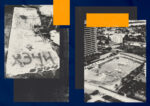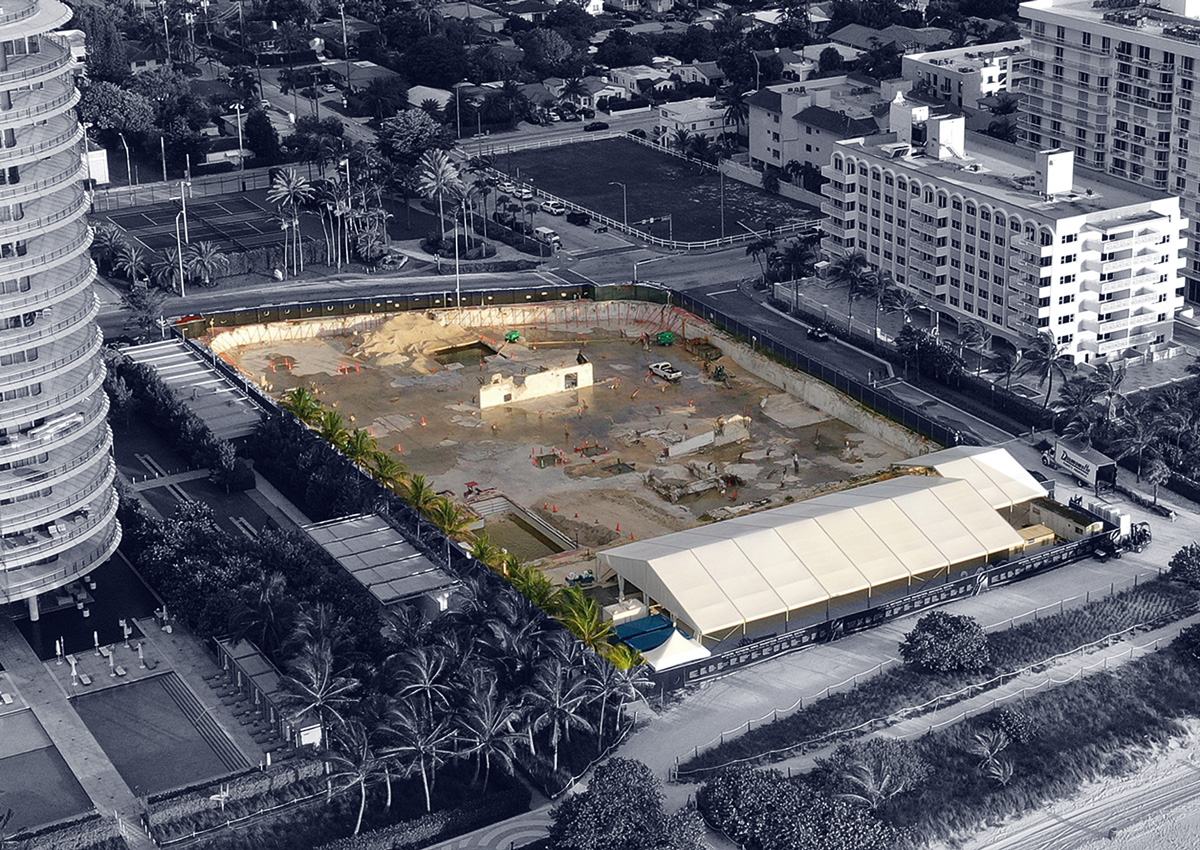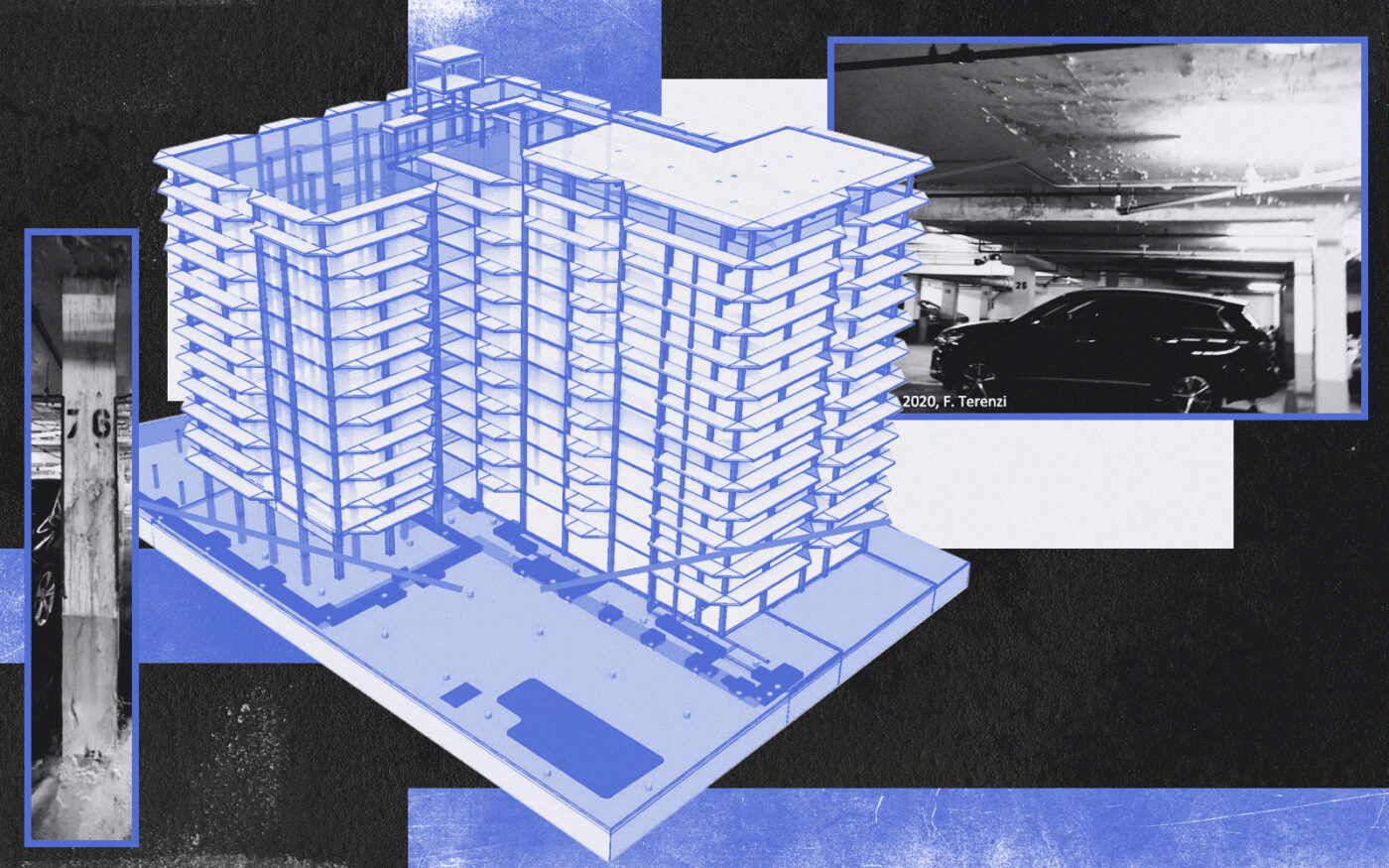The federal agency investigating the deadly condo collapse in Surfside found that three weeks before the tragedy, signs of “severe distress” were present in the pool deck.
Photos of the pool deck prior to the collapse show cracks in planters, indicating structural issues, according to an update on the National Institute of Standards and Technology’s investigation. NIST found a history of water seepage into the garage, which sat below the pool deck.
At its presentation on the investigation Thursday, NIST said that part of the pool deck collapsed into the garage at least four minutes before the tower toppled, and that timeframe could have been as long as seven minutes. NIST also revealed that the design and final construction of portions of Champlain Towers South failed to meet code standards at the time the building was completed in 1981. The collapse of the 12-story, oceanfront building at 8777 Collins Avenue killed 98 people in June 2021.
“Structural margins against failure in some areas of the pool deck were critically low at the time of the building’s collapse,” according to the report.
Although the collapse started in the pool deck, it is not necessarily the cause of the collapse. Investigators still are looking into whether the initial failure was in the tower itself or the pool deck, said Glenn Bell, associate lead investigator.
NIST researcher Sissy Nikolaou said the team is also investigating the effects of vibrations from neighboring construction, including driving sheet piles into the ground. “It could eventually create additional loads on a building,” she said.
Nikolaou didn’t identify the neighboring construction, though the luxury Eighty Seven Park condo tower was completed next door at 8701 Collins Avenue in 2019. Several Champlain residents had previously said they felt vibrations during the construction.
NIST’s analysis is based on eyewitness recounts, examination of structural materials such as columns and reinforcement steel bars, and photos and videos from various angles of the tower. Images taken weeks before the collapse show cracking of pool deck planters. Also, footage from a nearby beach walkway camera shows that seconds before the collapse, a portion of the pool deck is no longer visible, supporting the finding that it collapsed before the tower. Planters and blue pool deck furniture are seen in the underground garage in some of the images.
Investigators outlined the progression of the collapse: After the pool deck fell at about 1:18 a.m., a portion of the third level started to sag, and the ceiling and floor began moving shortly after 1:22 a.m. A middle section of the tower started to collapse first, with video footage showing the mid-tower columns fell more or less in unison. This signifies that the initial column failures were at or below the third floor, instead of from the top of the tower. As those columns dropped, the collapse progressed into a north section of the tower.
Investigators examined the structural integrity of the columns in parts of the building, finding that the design strength on the third level did not meet the building codes and standards at the time Champlain was built, including identifying “many areas of strength deficiency,” according to NIST’s presentation.
NIST previously had reported that pool deck construction failed to meet building codes and original designs, but now for the first time revealed findings that the issue extended into portions of the tower.
Among the construction issues, investigators found an “erratic alignment of concrete columns from story to story,” said NIST’s James Harris. In some cases, this misalignment was over three times what is acceptable in construction standards. Vertical bars within the columns are supposed to overlap, but investigators found the length of the overlap between lower and upper bars was “far less than specified in the drawings and building code,” Harris said.
Overall, the strength deficiency of columns in the building was less severe than that of columns in the pool deck. The findings also show that additional planters were added to the pool deck that were not included in the as-designed drawings of the property, increasing the load on the pool deck. Investigators are using computer models to determine how the pool deck slab would behave under the additional weight of the planters.
The cracking of the pool deck weeks prior to the collapse could have led to intrusion of water and carbon dioxide, possibly leading to corrosion and rusting of the steel bars. This reduces the structural integrity of the columns, NIST said.
An evacuee interviewed by NIST said that shortly prior to the collapse, they heard noises from the unit above them that sounded like moving chairs and tables. Some eyewitnesses also said they heard noises they likened to someone hitting a hammer against the wall.
This finding is somewhat contrary to the preliminary finding that the tower collapse was initiated in the lower floors, but supports a hypothesis that the overall cause was due to issues in the tower and not the pool deck.
NIST’s investigation timeline has been delayed from initial projections.
Pablo Langesfeld, whose daughter died in the collapse, said he was “deeply disappointed by the prolonged delay” in the investigation. “We still don’t know if the land is 100 percent safe for construction,” Langesfeld said. “The land should have been preserved as a crime scene until the investigation concludes.”
A class action lawsuit filed by the victims and their survivors was settled in 2022. More than $1 billion was paid out, with the bulk — $517.5 million — paid by Securitas Security Services USA, which employed security guards that monitored the building, but was not named as a defendant in the litigation.
The land was sold in a court-ordered sale to Dubai developer Damac Properties, which plans to build a 12-story, 52-unit building on the site.
Read more



